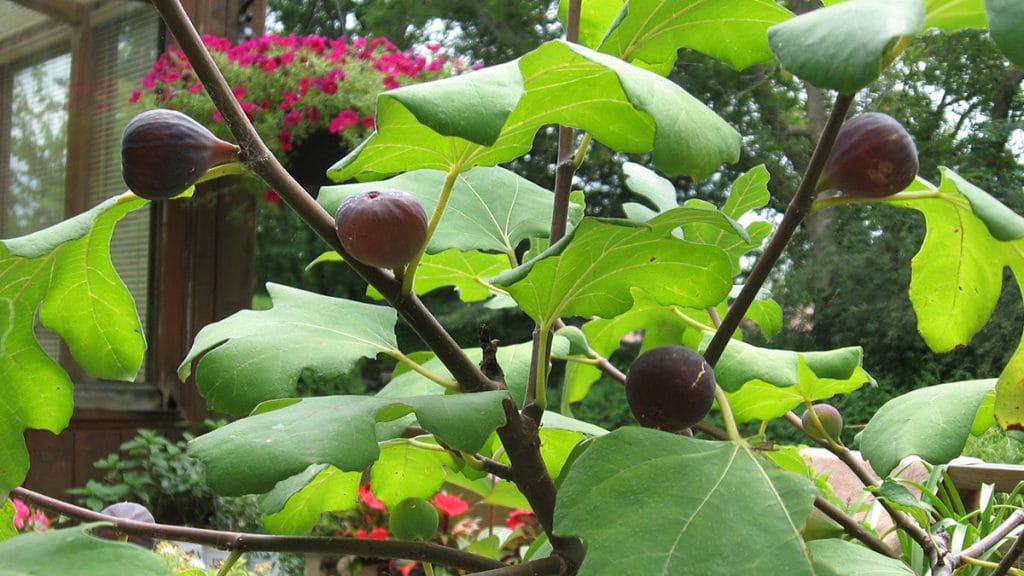
Usually in August, I began to harvest my main crop of sweet, voluptuous and totally decadent figs (Ficus carica cvs.). If you’re only familiar with dried, store-bought figs or Fig Newtons — not that there’s anything wrong with that — you are needlessly denying yourself the singular culinary delight that this ancient fruit provides. In order to savour the real McCoy yourself, you simply have to grow your own. Unlike other fruits (tomatoes or apples, for instance), figs stop ripening and their quality begins to deteriorate the moment they’re picked, and perfectly ripened figs are too delicate to transport any distance.
In the spring of 2013, Loblaw Garden Centres featured what they called the PC Hardy Fig, and I quickly snapped up two of them. After a little sleuthing, I discovered that their correct botanical name is F. c. ‘Chicago Hardy’, and like other cold-tolerant cultivars (such as ‘Brown Turkey’ and ‘Celeste’) their roots are hardy to Zone 4, but the aerial parts of the plant are hardy only to Zone 6. I live in Zone 5, so in order to hedge my bets I planted one in the garden and the other in a container.
Native to the Middle East and western Asia, figs naturally bear two crops: The first (called the “breba” crop) grows on the previous year’s wood, and in spring, tiny pea-sized figs often appear even before the leaves unfurl. The secondary (or main) crop is produced on the current season’s growth. Although I had high hopes for my in-ground specimen, I’ve found that it only fruits successfully after a mild winter — severe cold knocks it down to its roots, so the breba crop is sacrificed and unless the following summer is long and hot, it may not have time to grow new branches and ripen a main crop before autumn frosts knock it back again.
On the other hand, I’ve had great success growing ‘Chicago Hardy’ in a large container. It sits on my south-facing back deck until fall’s first frosts trigger leaf drop, and once the plant is fully dormant, I bring it into my unheated sunroom where winter temperatures rarely drop below the freezing mark (unheated garages, sheds and cellars also work well). Then in spring, when rising temperatures stir the plant back into active growth, it gets fed, watered and pruned, and out it goes again.
When figs are grown in containers, water and nutrient levels must be closely monitored. In the heat of summer, my potted fig requires daily irrigation and I feed it every seven to 10 days with a half-strength solution of all-purpose 20-20-20 fertilizer from late spring to late summer. Fortunately, figs are excellent garden communicators, and their leaves droop the moment they get thirsty, but if plants become too water-stressed they promptly abort their fruit, so it pays to keep an eye on them.
After five years, I repotted my ‘Chicago Hardy’ once, but when I moved it to a slightly larger container, I also root-pruned it (removing 25 per cent of the oldest, woodiest roots) to control its size. I’ve never had any insect or disease problems with my figs although I’ve certainly lost some fruit to cheeky squirrels. In their native climes, figs are pollinated by one-eighth-inch (2-mm)-long wasps (Blastophaga psenes), but “common” cold-hardy figs are self-fruitful and don’t rely on insect pollinators to produce fruit. ‘Chicago Hardy’ bears small- to medium-sized figs that turn from pale green to dark purple when ripe; my largest fig one year was about the size of a ping pong ball and weighed just over one ounce (34 grams to be exact).
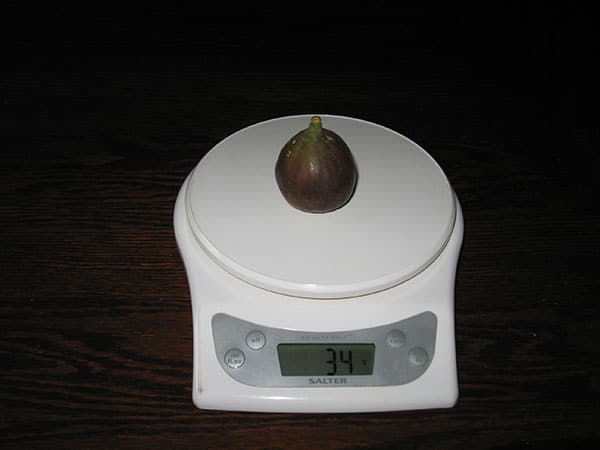
When harvesting figs, I’m sometimes tempted to don a toga, and pretend I’m Cato the Elder (234-149 BC), who waxed poetic about figs in his De Agri Cultura (or “On Agriculture”) and had definite “fig-pig” tendencies. In fact, archaeologists believe that figs were probably the first plant to be cultivated by humans around 9300 BC, predating the domestication of barley, wheat and legumes (beans, lentils and peas) by more than 1,000 years. I’m not surprised: A ripe fig fresh off the tree is a gastronomic thrill that will never get old.

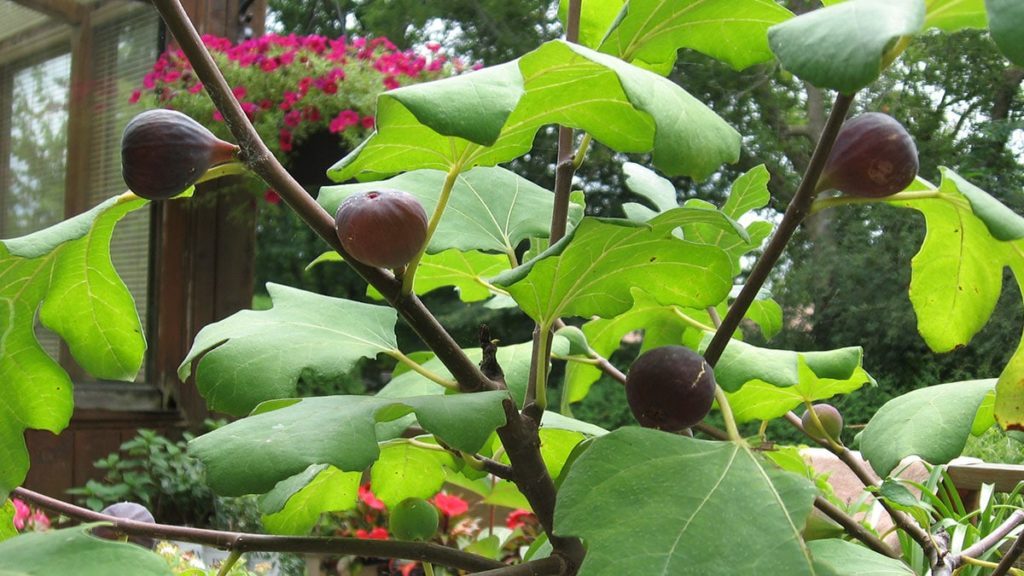

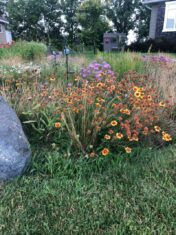

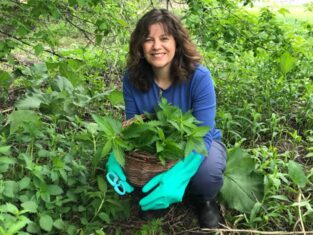

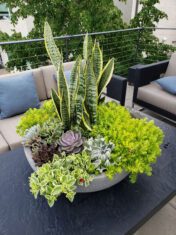


I have a 10 year old fig tree, approx 12 feet high that is in a 15 gallon pot but has rooted underground in my greenhouse…it is unheated from Sept to March and I cover the pot with soil and newspaper in winter. The tree produces about 200 figs a year. The first few years, before it rooted into the ground, I would lie it down and cover with soil but now I just hope the greenhouse plastic is enough to protect it from winter.
Great article! I have been growing figs for over 35 years in Toronto. The largest I’ve had was over 7 ft tall and when my son was young he would climb the tree to gorge on figs, we latterly harvested baskets of them. The secret was planting them in the garden and over-wintering them underground. We rarely had any winter die off and always had an early and late crop. The variety was a type common in my home town in Italy and made large fruit, It is a lot of work but well worth the effort.
Thanx again for a great article.
Hi Nick…I am a recent “transplant” from the coast, and once read an article by one of our coastal garden sages, about an Italian gent in Burnaby who overwintered his Fig by curling
part of its trunk close to ground, and wrapping it tenderly with burlap at al. ?You?. My fig rewarded me each spring, but I had to compete with the birds for a fig! We kept each other company in the rain, watching for A ripe, juicy treat!
Hi all of you:
After living in Canada over 30 years comming from a semi-tropical weather city , i got very excited in May 2017 when i saw Chicago Hardy figs plants at Home Depot in Belleville ; to that particular visual moment i had no idea ( i even did not think about growing figs in Canada like something real) that this possibility exist then i decided to buy 3 and start my adventure quicker than immediately.
I began my tutorial having in mind how to bridge winter ; the plants were a little less than foot high and as soon as i came home i start digging holes for proper planting. Days and weeks passby and by August i had few figs that remove in September. Now , October comes and the figs started to slow down and by November i made 3 chicken wire rings for covering each one and refilled inside with leafs to the top plus another circle outside too , thinking (acccording with tutorials) this is my best way to protect and isolate the figs from the cold and cruel low temperatures.
During winter i went frecuently to visit the plants (about 100 meters from house) and of course the rings were white towers guessing how my friends were doing inside…..well , this part is easy to understand because each one of you experience the same feeling each winter.
Ok , this is the “”dramatic-happy””part; April arrived and all of the many many plants we have fruit trees and no fruit trees began to sprout ; i gave the figs extra days before removing the rings and burlap but by April 23 i uncovered ; what i saw was ugly and i sincerely i thought they were gone. I pruned the top parts , clean around and wait and wait and wait…While the rest of plants were back to life , my 3 friends no vital signs ; May 15 nothing , May 25 nothing then removed them and placed them in containers and wait ( i planted 3 Magnolias instead on those spots) and wait; for me they were dead but my wife gave me courage and hope and suddenly by June 10 , Alelluya ; i plant them again in 3 better and different spots and as per today July 29 they super healthy about almost 2 feet high with multiple branches each one and total of 20 figs growing nicely :PATIENCE,PATIENCE and more PATIENCE , a virtue we need to cultivate along with figs… I am a happy man .
Please excuse my drafting in English , thank you.
Hi Christina, As you will be all too well aware, southern Ontario has had some very punishing cold spells this winter, so much will depend on how hardy your fig cultivar is; fortunately you have spared it from desiccating winds and buffered it from the worst extremes of winter freeze/thaw cycles.
We are now entering a two-week period of relatively warm weather: Once you are sure that the rootball has thawed out (likely within the next 36 hrs.), I would recommend watering it, especially if it went into winter dormancy with a *dry* rootball. One good watering should be enough for the next month or so–you want to avoid bringing it out of dormancy too soon–so I advise you to leave it in your cold/cool, dark garage until you begin to see leaf buds starting to unfurl. Once it begins to produce foliage &/or new shoots, you should move it to warmer location with higher light until you can take it outdoors (after your area’s last frost date–probably early to mid-May). Let us know how you get on–!
All best, Stephen
I bought a Negronne fig plant from Richter’s last year. It has grown well (about 2.5ft tall) and this year it produced 8 figs. However, after over a month, they remain quite small and green. I have the plant in a pot and it sits in the sun (what sun we’ve had this summer) and is watered regularly. I also bring it in at night (not sure if raccoons like figs). I’m in zone 5b or 6a depending on which chart. Is there anything else I need to be doing in order to get the figs to ripen? Thanks.
hi Susan i have a fig tree as well some ripen nicely other fall off green have you had this happen my tree is indoors facing south about 3 .5 ft tall thank you
I have been gifted a fig tree with two small green fruit growing . Type unknown! The tree is in a round 10 inch pot and wonder if it should be repotted? When is best time to repot , now or in spring? Appreciate your response.
Hello Rosemary,
If it’s fresh from a nursery — and a fairly young plant — it should be fine in a 10-inch pot for at least one season. If you suspect that it’s pot-bound, you can tease the pot away from the plant to ascertain if roots are overly dense and circling around the outside of the rootball.
If you decide it needs repotting, remember to repot it in a container only a little larger than the one it’s currently in (so in your case, and 11- or 12-inch pot); if you repot it in a huge container, it will spend all its time making roots instead of fruits.
The best time to repot a fig is when it’s dormant (and leafless), i.e., any time between late autumn and early spring. Enjoy those fresh figs!
Thank you for writing an article that inspired me to get some fig trees. I read you article yesterday and rushed out to Loblaw today and purchased THREE plants. My recently deceased mother was very fond of fresh figs so she will be front and centre in my thoughts when I see the trees and taste the fruit next year. Two plants are about 4 feet tall and the third one is only about 2 1/2 feet tall. When should I prune the trees and how much plant material should I remove? One or two of the plants have a small fig on it. I hope they ripen enough to enjoy this summer.
Hi Jennifer, and congrats on your *three* new fig trees! (I especially love that you’re growing them in honour of your late mother).
As far as pruning goes, I wouldn’t be too concerned about timing — figs are vigorous plants and they always bounce back quickly. Fig experts will tell you that the prime time for pruning figs is after the first (breba) crop has been harvested and before the second (main) crop has set. Having said that, I’ve pruned my container-grown fig when it was dormant in autumn (in order to squeeze it through my sunroom door), and I’ve also pruned it in spring when the breba crop was small to negligible. As with all woody plants, remove no more than 25 per cent of the wood annually, prune to just above an outward facing bud, and remove any branches that grow toward the centre of the plant (to keep an open, sunny framework).
You should also decide if you want a single-stem “tree-form” or a multi-stemmed “bush-form” fig (I grow the latter) and prune appropriately. After a few years, pruning should be confined to shaping the tree/shrub, and in some years, you may find you can skip pruning completely. Good luck, enjoy those fresh figs and make your mother proud! 🙂
I have had figs growing in my Mississauga garden for over 30 years. They are planted against a south facing wall and were planted from unnamed cuttings given to my father. They often die to the ground but in hot summers or when we have a mild winter they grow like crazy! This year they are over 2 metres tall and promise to put on a good show of fruit. I just came back from 4 weeks away and i sprouted a juicy fig that was ripe. It didn’t take long to devour it! I don’t do much and water and fertilize when I remember. I believe if I were to build a temporary shelter of clear plastic, over winter the heat absorbed by the brick wall would be enough to protect it and allow it to grow from last years wood. I also purchased a Chicago Hardy and plan to test it in another part of the garden. Wish me luck!
Good Luck, Alroy! (Not that it sounds as though you need it 😉 )
I think you’ll be pleased with your ‘Chicago Hardy’. Do you know the origins of the cuttings your father gave you?
Best wishes, Stephen
I am from Island Hvar Croatia, so I wanted to plant fig for a long time, but I did not want big, early one that is so watery. In 2015 I planted Ficus carica ‘ Brown Turkey’ in my backyard in Nanaimo BC. I had only one fig for the spring crop and fruit is abundant for the fall crop. Can not wait for them to ripen!
Excellent article! What size pot did you start with, and what size pot is your fig in now?
Hi Susan,
When I bought the fig it was in a 9 x 9 x 9-inch square plastic pot. I moved it to a round, black plastic pot that is 11 inches wide and deep (the sort that you get when you buy a container-grown shrub).
Although not particularly elegant, the black plastic absorbs heat and keeps the roots warm, it reduces evaporation (compared to terra cotta) so that the soil doesn’t dry out as quickly and it won’t crack if it gets “frosted.”
Thank you for your kind comments, Stephen
Thank you for sharing your experience with growing figs, Stephen. Most helpful.
Just the other day, I was at Loblaw and saw the very fig trees you mention in your article and I’ve been contemplating about growing one ever since. I think I will now. This will be my first attempt at growing figs and I will be growing mine in a large pot as well.
Hi Christina,
Take the plunge– You won’t regret it!
All best, Stephen
I am in my 2nd yr. of growing one fig plant in a pot, last year had two figs, put it in basement for the winter and took out in late March into heated sunroom. In May put it on deck (south facing). So far it has 12 figs on it and still producing new leaves. The figs are very green and feel hard, when do I pick them?
Hi Judy,
Ripe figs turn from green to purple-brown when they’re ripe, and they should feel soft to the touch. As well, unripe figs usually have their “bottoms” facing upright (toward the sun), and once they are fully ripe, they begin to droop downwards. If you look at the picture at the top of the post, the fig at the top left-hand corner is beginning to droop, signalling that it will be ripe in a day or two. Bon appetit!
Can my “Brown Turkey” fig overwinter in our sunroom? The temperature never drops below freezing, but it is cool. If it can live there for the winter, how would I treat it?
Hi June,
The ideal temperature for overwintering dormant figs is between 0 and 7 (45F) degrees Celsius, so my concern is that your sunroom may be *too* warm to maintain dormancy. Also, too much bright light may also coax your fig out of dormancy too early (I overwinter mine in a dark corner of the sunroom where the direct rays of the sun don’t hit it).
But if you can meet those conditions, you should just ignore it until you see new growth in spring (either breba fruit or leaves). In other words, no water or fertilizer until you see signs of fresh growth — the same as dormant trees outdoors. If you think it may be too warm, consider an unheated garage, cellar, or a cool, dark area in your basement where you can close the heat vents. Fingers crossed! Stephen
Oh no! I have left my fig in my unheated garage in Mississauga. It’s freezing cold in there, almost as cold as outside. But, I haven’t watered it at all. Should I have been? Is it too late? Help!